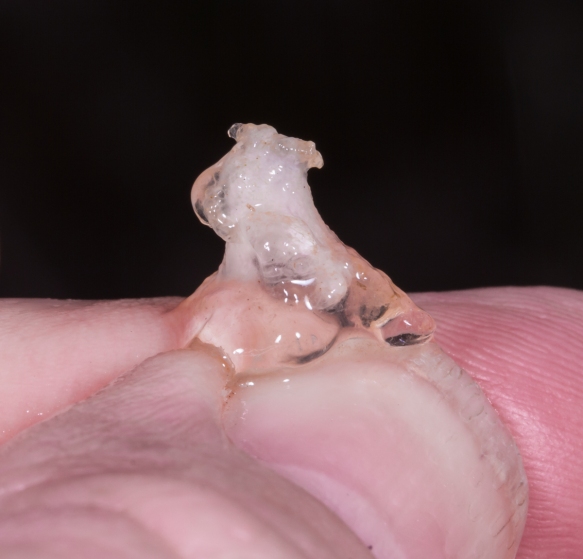Spring is here. Maybe not in its totality of warm days and flowering plants, but there are signs – signs of new life. This week I heard the first dawn chorus in my woods – the songs birds sing, especially in spring, at the first light of day. The lilting notes of the Bluebirds are particularly noticeable after having been so quiet for many months. And the first frogs have been heard calling from what should be woodland pools full of water after our wet winter. Sunday was one of the first spring-like days we have had in these parts in quite some time, so it demanded a walk in the woods. My walk ended up along the creek that flows across the power line a half mile or so from the house. In its lifetime, the creek has created several oxbows and pools in the floodplain and these are home to some of my favorite living things, the creatures of vernal pools. These often ephemeral pools are home to a host of amphibians and invertebrates that are found only in waters that contain no fish. One of the most interesting to me is the Spotted Salamander, Ambystoma maculatum.
These large woodland salamanders make their way to vernal pools on warm, rainy nights in late winter and early spring, to breed and lay eggs. They are most easily seen by flashlight at night or by gently turning over logs near the edges of the pools. During the breeding frenzy, male salamanders deposit specialized structures, called spermatophores, on the bottom of the pool. At first glance, the spermatophores may look like bird droppings littered about on the leaves in the pool.
But a closer look reveals something quite different. I remember thinking they resembled a gelatinous Hershey’s Kiss the first time I picked one up. These salamander candies are about 6-8 mm tall, with a clear, gelatinous base, and a multi-pronged whitish stalk on top of which is a cap containing the sperm.
I have watched pools and noticed that usually about two to three days after I first see the spermatophores on the bottom, I find the first egg masses. After the courtship bout, the female salamander picks up the spermatophore in her cloaca and about two nights later starts laying egg masses.
The heavy rain had been on Friday night, but the pool I saw on Sunday contained no eggs and it was getting very shallow, so it started me wondering about the spermatophores. I had always assumed the female picked up the entire gelatinous packet. But I decided to check it out before posting something about this whole process. I quickly turned to an excellent salamander resource on my bookshelf, Salamanders of the United States and Canada, by James. W. Petranka. I had a chance meeting with Dr. Petranka at sunrise this past winter on the viewing platform at Pungo Lake. After observing and discussing the birds for a few minutes, he introduced himself, and I excitedly blurted out, “Oh, you’re the salamander guy”! His book is an amazing compilation of detailed information on the life histories of salamanders and I have referenced it countless times, so it was an honor to meet him in person, and he was gracious to not laugh at my enthusiasm. Petranka referenced the females “picking up sperm caps”. That implies that maybe they do not take in the entire spermatophore. So, I emailed another excellent resource on all things natural history, Jeff Beane, Collection Manager for Herpetology at the NC Museum of Natural Sciences. He responded saying the female squats over the spermatophore and takes up seminal fluid from the top with her cloacal lips, leaving behind most of the gelatinous structure. She may do this with several different spermatophores. And the gelatinous base may remain visible in the water for a few days afterward before decaying. Mystery solved. Yesterday, three days after the presumed breeding bout during the rains of Friday, a few spermatophores were still visible in the pool. These may either not have been utilized by a female salamander, or, they may just be the bases slowly decaying. Later this week, I will check that and other nearby pools to see if there are any egg masses. I always look forward to seeing the “globs of jelly” that result from the nights of salamander candy.




